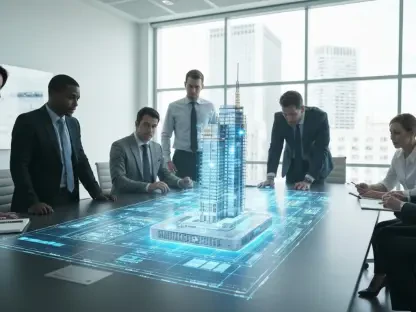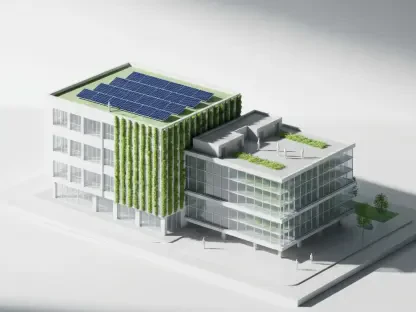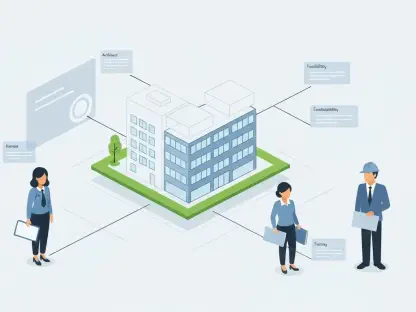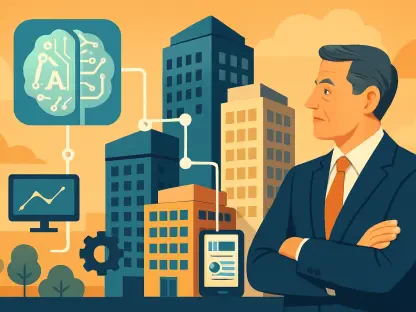The technological landscape of urban infrastructure is rapidly evolving, driven by advancements in smart technologies like IoT, AI, and sensor-based systems. A significant player in this transformation is the smart elevator market, poised to reshape vertical transportation in cities across the globe. These elevators represent a substantial upgrade from traditional systems, incorporating intelligent controls and connectivity features. With real-time data analytics optimizing operations, smart elevators are not just elevating individuals—they are redefining building dynamics and user experiences. As urban areas face challenges like increasing populations and space constraints, efficient solutions are necessary to accommodate the needs of high-rise buildings, and smart elevators offer a promising pathway. Their adoption is accelerating the shift towards smart buildings that prioritize energy efficiency and passenger safety, playing a critical role in sustainable development. With projections indicating growth from $101.03 billion to $164.3 billion by 2032, smart elevators stand at the forefront of innovations driving future urban infrastructure.
Market Growth and Key Drivers
The smart elevator market is experiencing dynamic growth, with a projected compound annual growth rate (CAGR) of 5.55% from now until 2032. Several factors are fueling this expansion, primarily the demand for efficient vertical transportation solutions in high-rise buildings. As urbanization intensifies, regions such as Asia-Pacific and the Middle East are especially witnessing significant demands, given their fast-paced development. Developed areas like North America and Europe are also keenly investing in upgrading existing systems with smart technologies. This shift is not merely driven by necessity but also by the benefits these advanced systems offer, such as improved passenger safety, energy efficiency, and convenience. The transition from conventional elevators to smart alternatives aligns with the broader trend towards smart building adoption, enhancing overall building management, sustainability, and user experience. As cities grow denser, smart elevators are becoming integral to developing urban infrastructure that accommodates modern demands and priorities.
The market dynamics are strongly influenced by the increasing emphasis on sustainability and energy efficiency in building design and operation. Government regulations, such as green building certifications like the Leadership in Energy and Environmental Design (LEED), are encouraging the integration of energy-efficient features in new developments and renovations. By reducing operational costs through predictive maintenance and enhancing building management systems through real-time data analytics, smart elevators fulfill these regulatory requirements, thus gaining robust market traction. Additionally, the pressing need to manage traffic within buildings and minimize wait times—especially in urban centers where time efficiency is paramount—positions smart elevators as ideal solutions. Their algorithms intelligently assign elevator cars based on real-time variables, ensuring smoother transportation and enhanced user experiences. This capability, coupled with advancements in AI, sensor technology, and connectivity, underscores the smart elevator market’s potential to transform urban landscapes comprehensively.
Technological Advancements
At the heart of the smart elevator revolution lies technological innovation, which has become pivotal in shaping the market and driving its growth. Recent advancements in AI-powered destination dispatch systems, IoT connectivity, touchless controls, and personalized passenger experiences are significant developments transforming elevators into intelligent, responsive devices. These innovations enable predictive maintenance, drastically reducing operational costs and downtime while ensuring high efficiency and reliability. By leveraging algorithms that account for traffic patterns, passenger destinations, and time-of-day variations, these elevators optimize their operations, smoothing transportation across crowded buildings while conserving energy. Connected via cloud platforms, smart elevators provide enhanced real-time monitoring capabilities and remote troubleshooting, paving the way for a seamless urban living experience.
Sensors and AI-driven control systems enhance user safety and operational efficiency, addressing key market demands for improved safety standards and energy efficiency. These technological enhancements come with the challenge of cybersecurity, requiring robust strategies to protect these systems from potential threats. By establishing secure, reliable communication networks, elevator manufacturers and building management can ensure that passenger data and operational integrity remain uncompromised. The smart elevator market is increasingly focusing on integrating emerging technologies, such as 5G for rapid data exchange, AR, and VR for elevated maintenance and training processes, further facilitating the transition towards intelligent urban infrastructure. As these systems evolve, their capacity to shape the urban environment is growing, turning them into crucial components of modern built environments.
Challenges and Opportunities
Despite the promising growth trajectory and transformational potential of the smart elevator market, several challenges must be addressed to sustain momentum. High initial installation costs can deter building owners, particularly in regions sensitive to pricing fluctuations. Retrofitting traditional buildings with smart systems requires substantial modification, often posing technical and financial obstacles. Moreover, as elevators become smarter and more connected, cybersecurity risks emerge, threatening operational security and safety. As dependency on smart technologies grows, it is crucial to develop secure infrastructure to safeguard against potential breaches, ensuring passenger data and building operations remain uncompromised. Diverse regulations and compliance standards across countries add layers of complexity, complicating widespread market adoption. Furthermore, a clear skill gap persists with insufficient trained personnel adept at operating and maintaining these sophisticated systems, potentially impacting operational efficiency.
Despite these barriers, the market holds significant opportunities fueled by rising urbanization and sustainability goals. Collaboration between elevator manufacturers, technology providers, and building management companies is pivotal to fostering innovation and comprehensive integration with smart city initiatives. Such partnerships will enhance seamless integration with other smart building technologies, ensuring that intelligent elevators act as vital components of sustainable urban infrastructure. The possibility of further developments, such as cargo handling capabilities, integration with smart parking systems, and enhanced emergency response functions, presents exciting prospects for expanding elevator functionality beyond passenger transportation. By navigating these challenges and leveraging opportunities, smart elevators will remain essential to constructing efficient, environmentally responsible, and forward-thinking built environments worldwide.
Future Outlook
The urban infrastructure landscape is rapidly evolving due to advances in smart technologies such as IoT, AI, and sensor-based systems. A key player in this transformation is the smart elevator market, which is set to revolutionize how vertical transportation is handled in cities worldwide. These new elevators transcend traditional ones by introducing intelligent controls and connectivity. By leveraging real-time data analytics, smart elevators optimize operations, transforming building dynamics and enhancing user experiences. As urban areas contend with growing populations and limited space, efficient solutions are essential for high-rise structures. Smart elevators present a promising pathway, hastening the transition to smart buildings that emphasize energy efficiency and passenger safety, contributing significantly to sustainable urban development. With forecasts showing growth from $101.03 billion to $164.3 billion by 2032, smart elevators are key innovations paving the way for future urban infrastructure.









